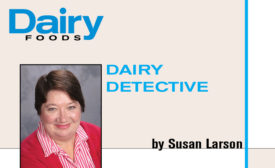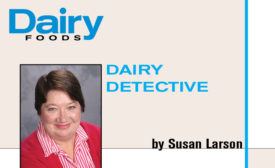Articles by Susan Larson
The key to achieving on-trend dairy products is the use of simple ingredients that have a purpose.
Read More
Use dairy’s total nutrition to meet protein needs
Research makes the case for why dairy should be the protein of choice. Meanwhile, new products containing whey protein are on the rise.
August 4, 2017
Opportunities in snacking are primed for dairy ingredients
A look into daily snack patterns offers insight for dairy manufacturers to tap into what consumers are looking for with their snacks.
March 8, 2017
Make the most of milkfat ingredients
Consumers’ perception of full-fat dairy products is changing as research gives a new appreciation for milkfat ingredients.
January 6, 2017
The expanding appeal of dairy proteins
Dairy proteins offer benefits in several key trend areas, from consumers’ desire for more high-quality protein to clean label changes.
October 5, 2016
Using permeate to reduce sodium in dairy foods and beverages
By using permeate, or dairy product solids, it’s possible to reduce salt in many foods and beverages without stripping away the salty flavor.
August 11, 2016
Stay ahead of the curve. Unlock a dose of cutting-edge insights.
Receive our premium content directly to your inbox.
SIGN-UP TODAYCopyright ©2025. All Rights Reserved BNP Media.
Design, CMS, Hosting & Web Development :: ePublishing


